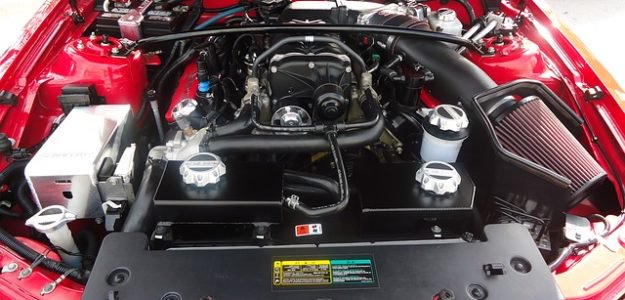
You may not realize cleaning your engine can lengthen its life, help it run cooler, and allow you to find problems easier. The number of 100,000-mile cars on the road is at an all-time high, meaning engines are in need of proper care now more than ever before. Using a name brand engine degreaser in tandem with an engine protector is a simple routine to help care for the "heart" of your vehicle. Using an engine cleaning system twice per year, typically in spring and winter, will keep your vehicle running longer and more efficiently by protecting against wear and tear from exposure to external elements such as salt, snow, tar, dirt and road grime. Anyone can perform preventative maintenance easily themselves, which removes built-up residue and protects the engine, allowing it to run cooler, resist grime better, and last longer. Here are the simple steps to follow:
Step 1: Before applying engine degreaser, shut off the engine and wait until it has cooled. Then, cover the air intake, any electrical wires that may be cracked or frayed and any other electronically sensitive areas of the engine. Once sensitive areas are protected, apply the engine degreaser most appropriate for the vehicle. Foamy engine cleaner is recommended for newer engines with up to 75,000 miles. It is designed to lift away dirt and salt by expanding into all of the nooks and crannies of the engine to do the job that often requires a brush. This degreaser does an excellent job at cleaning up hoses and belts, and won't damage plastic parts. Original engine degreaser is recommended for engines with 75,000 - 150,000 miles. The self-emulsifying formulation degreases all types of blocks, manifolds, valve covers, and parts to ensure working on them is easier. If the engine is really bad, using a heavy duty gel engine degreaser is recommended for high heat, hardworking engines with 150,000 miles or more. It is the perfect solution for older engines with stubborn build up from harsh environments.
Step 2: After the degreaser is applied, let it sit on the engine for 10 minutes. To finish, spray down the engine with water to wash off the engine degreaser and allow the engine to dry. The engine is then ready for diagnostics, repair or engine protector.
Step 3: On a cooled engine, spray an even coat of engine protector. Let the formula sit for a few minutes and then use a rag or shop towel to wipe, leaving a protective layer that helps resist dirt and grime and makes future
engine cleaning faster and easier. The engine protector also leaves a shiny finish. Engine cleaning is an essential part of care for vehicles, just like changing oil or rotating and balancing tires, and should be incorporated into car care routines to ensure engines run smoothly and efficiently year-round.
Book An Appointment